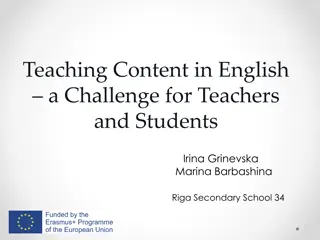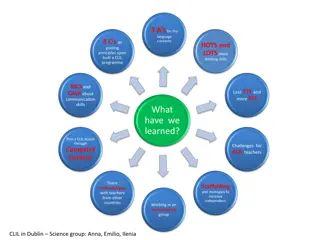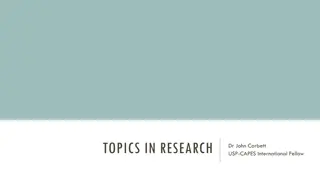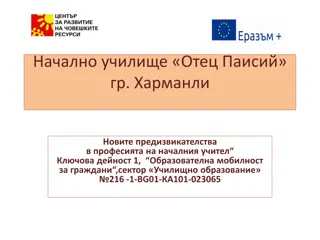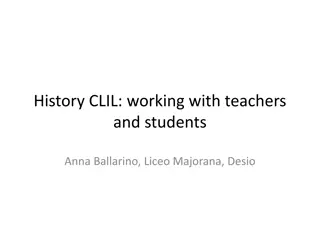CLIL.C Units 5-6: Ways UNESCO Helps Solve Global Problems - Lesson Overview
In CLIL.C Units 5-6, students will learn about how UNESCO tackles global issues and associated vocabulary. The lesson includes activities such as reading for main ideas, practicing presentation skills, and exploring ways to reduce global poverty. Through group discussions and exercises, students del
1 views • 39 slides
Challenges and Benefits of CLIL in Teaching English and Science for Grade 5 Students
Using Content and Language Integrated Learning (CLIL) as an educational approach presents challenges and opportunities for teachers and students alike. This method involves teaching both content and language in an additional language, such as English. The CLIL program designed for Grade 5 students i
0 views • 32 slides
Exploring Alcoholic Fermentation Using Yeast in CLIL Science Lesson
This CLIL lesson focuses on the process of alcoholic fermentation using yeast in brewing, baking, winemaking, and cider production. Students will learn about metabolism, biotechnology applications, and different cultures in Europe. The lesson includes activities to build understanding through hands-
0 views • 4 slides
Analyzing Data Collection Procedures in Bilingual Classroom Interaction Research
This research delves into the structured methods of data collection in a bilingual classroom setting, focusing on video-recorded interactions in content and language integrated (CLIL) history lessons taught in English to Finnish-speaking students. The article outlines the source, extent of data coll
0 views • 13 slides
Language Teaching Approaches Overview
Various language teaching methods such as PPP (Presentation, Practice, Production), TBL (Task-based Learning), TPR (Total Physical Response), and CLIL (Content and Language Integrated Learning) are explored in this document. The PPP method involves three stages - presentation, practice, and producti
0 views • 14 slides
Enhancing CLIL Practices at Liceo Majorana - Working with Teachers and Students
Explore the collaborative efforts of Anna Ballarino at Liceo Majorana in Desio, focusing on CLIL practices. Delve into her work with teachers to enhance English courses, history, and philosophy modules, as well as engagement with students through conditional exercises and educational content. Gain i
0 views • 21 slides

